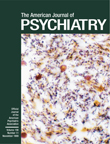Achieving Effective Treatment of Patients With Chronic Psychotic Illness and Comorbid Substance Dependence
Abstract
OBJECTIVE: The changing effectiveness of a treatment program for dual-diagnosis patients was evaluated over a 2-year period with the use of a sequential study group design. METHOD: The treatment outcome of 179 consecutively enrolled patients with chronic psychotic illness and comorbid substance dependence who entered a specialized day hospital dual-diagnosis treatment program from Sept. 1, 1994, to Aug. 31, 1996, was evaluated. The 24 months were divided into four successive 6-month periods for comparing the evolving effectiveness of the program for groups of patients entering the day hospital during these four periods. Treatment attendance, hospital utilization, and twice weekly urine toxicology analyses were used as outcome measures. RESULTS: The initial treatment engagement rate, defined as at least 2 days of attendance in the first month, increased significantly from group 1 to group 4, more than doubling. Thirty-day and 90-day treatment retention rates also substantially increased from group 1 to group 4. More patients had no hospitalization in the 6 months after entering the day hospital program than in the 6 months before entering the day hospital program. Urine toxicology monitoring indicated that the patients in group 4 were more likely than those in group 1 to remain abstinent at follow-up. CONCLUSIONS: The evolving clinical effectiveness of a developing program can be quantified by using a sequential group comparison design. The sequential outcome improvements may be related to the incremental contributions of assertive case management and skills training for relapse prevention.



